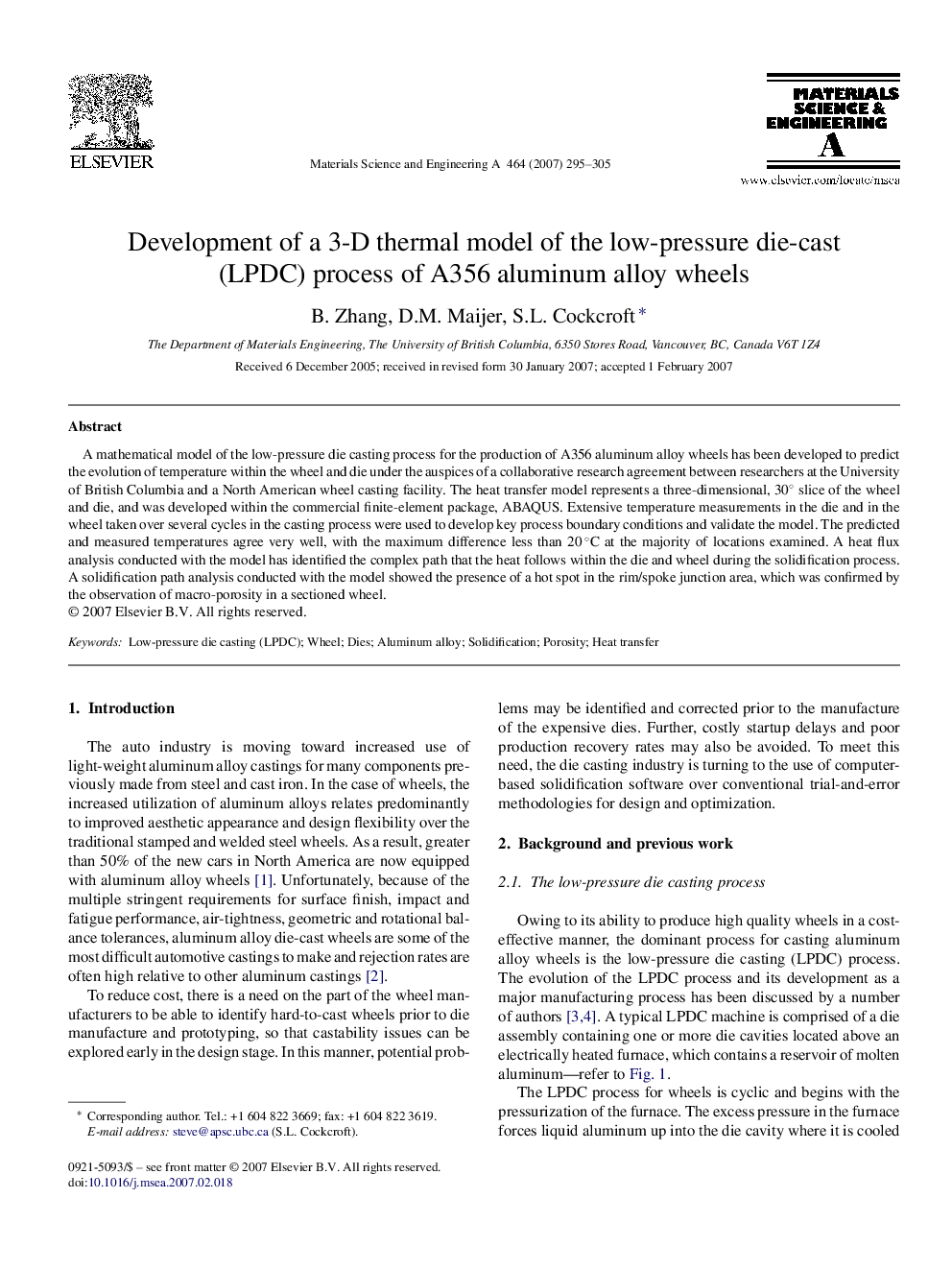| Article ID | Journal | Published Year | Pages | File Type |
|---|---|---|---|---|
| 1583716 | Materials Science and Engineering: A | 2007 | 11 Pages |
A mathematical model of the low-pressure die casting process for the production of A356 aluminum alloy wheels has been developed to predict the evolution of temperature within the wheel and die under the auspices of a collaborative research agreement between researchers at the University of British Columbia and a North American wheel casting facility. The heat transfer model represents a three-dimensional, 30° slice of the wheel and die, and was developed within the commercial finite-element package, ABAQUS. Extensive temperature measurements in the die and in the wheel taken over several cycles in the casting process were used to develop key process boundary conditions and validate the model. The predicted and measured temperatures agree very well, with the maximum difference less than 20 °C at the majority of locations examined. A heat flux analysis conducted with the model has identified the complex path that the heat follows within the die and wheel during the solidification process. A solidification path analysis conducted with the model showed the presence of a hot spot in the rim/spoke junction area, which was confirmed by the observation of macro-porosity in a sectioned wheel.
